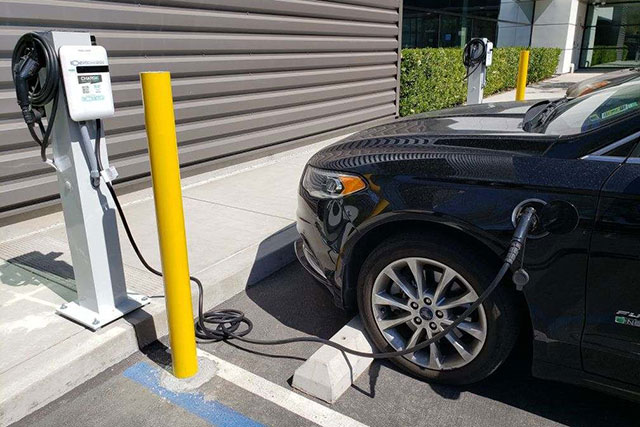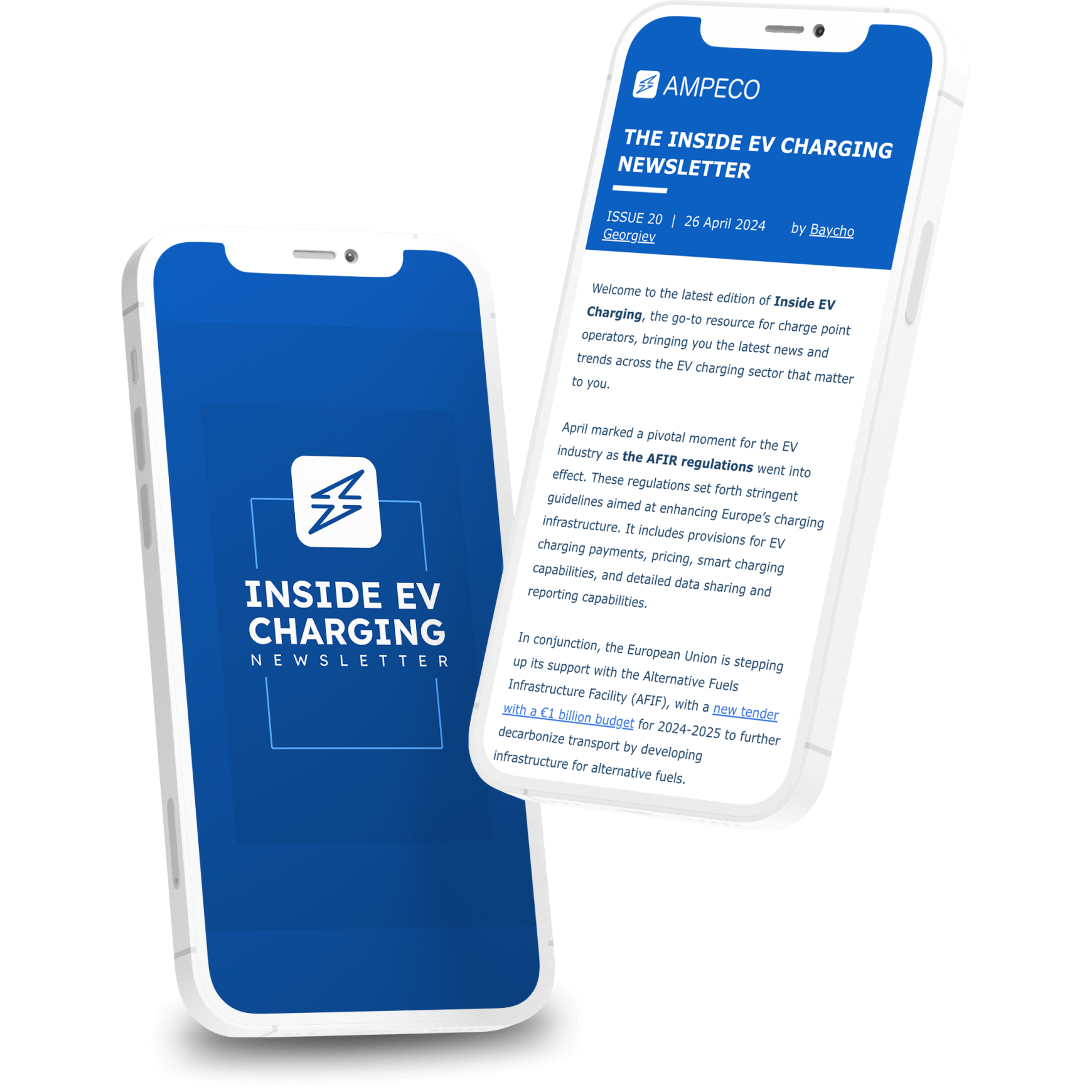Leading EV Charging News: Trick Updates on Facilities and Technology

Recent Innovations in Fast-Charging Modern Technology

Moreover, improvements in battery innovation, including enhanced thermal administration systems and higher power density batteries, enhance fast-charging capabilities. These growths reduce the threat of battery degradation during quick charging, guaranteeing long life and performance for EV proprietors.
Additionally, the integration of wise charging remedies is enhancing customer experience, enabling real-time surveillance and vibrant pricing versions. EV Charging news. This versatility allows motorists to enhance billing times and expenses based upon grid demand
As car manufacturers remain to buy fast-charging networks, the cooperation between sector stakeholders is critical. Partnerships in between billing station companies and auto suppliers are leading the means for substantial coverage, eventually cultivating an extra durable EV environment. These improvements are critical in sustaining the shift to lasting transport.
Government Campaigns for Billing Development
Federal government initiatives play an important role in the development of electrical lorry (EV) charging framework, helping with the transition to lasting transport. Various government and state programs are being executed to improve charging accessibility, reduce the financial burden on consumers, and promote the fostering of electric lorries.
Especially, the united state government has assigned significant funding with the Framework Financial Investment and Jobs Act, which earmarks $7.5 billion for EV billing network growth throughout the country. This financing is focused on releasing hundreds of brand-new billing stations, specifically in underserved areas, thus attending to array anxiety among prospective EV customers.
In addition, countless states are establishing regulation to streamline the permitting procedure for billing terminal installments, which is crucial for accelerating deployment. Rewards such as tax obligation credit histories and refunds for both customers and organizations are also being introduced to motivate the setup of billing facilities.
Furthermore, public-private collaborations are progressively coming to be an emphasis, leveraging personal investment to enhance government financing. These campaigns underscore a collaborative technique crucial for building a comprehensive and reliable EV billing network, inevitably contributing to a greener and more lasting future.
Ingenious Battery Solutions Enhancing Effectiveness
Revolutionizing the landscape of electric lorry (EV) modern technology, cutting-edge battery services are considerably enhancing performance and performance. Breakthroughs in battery chemistry, specifically with lithium-sulfur and solid-state batteries, are leading to boosted power density, which enables for longer ranges and faster charging times. These brand-new battery kinds have the possible to outmatch typical lithium-ion batteries by using greater capabilities while decreasing weight, therefore boosting general lorry effectiveness.
Furthermore, growths in battery administration systems (BMS) are optimizing power use and expanding battery life-span. Smart algorithms keep track of battery health and wellness and efficiency, making it possible for real-time adjustments to billing and discharging processes. This not just improves the efficiency of the battery yet additionally guarantees an extra lasting and dependable power source for EVs.
Furthermore, the assimilation of recycling innovations is attending to the environmental impact of battery manufacturing and disposal. Developments in second-life applications for EV batteries are promoting their use in energy storage space systems, adding to a circular economic situation.
As these innovative battery options continue to evolve, they guarantee to change the EV market, making electrical lorries more accessible and attractive to a wider target market while supporting international sustainability goals.

Partnership In Between Automakers and Billing Networks
Identifying the critical requirement for a robust billing framework, automakers are progressively working together with charging network service providers to boost the EV ownership experience (EV Charging news). These collaborations intend to create a smooth charging ecosystem that benefits customers and supports the change to electric vehicles
Major automotive brands are signing up with pressures with well established billing networks to increase their charging terminal protection, making sure drivers have access to practical and trusted billing options. For example, collaborations with networks like ChargePoint and Electrify America enable automakers to incorporate billing options straight right into their lorries' navigating systems, directing users to the nearby stations and giving real-time accessibility updates.
In addition, these collaborations often result in the development of fast-charging technologies that substantially go to the website minimize the time needed to reenergize an EV. By merging resources and knowledge, car manufacturers and billing networks can innovate much faster, producing solutions that fulfill the growing need for electrical mobility.
Furthermore, joint initiatives may likewise cause more standardized charging protocols, which can ease customer confusion and advertise more comprehensive EV adoption. Generally, these critical partnerships are essential in building a effective and straightforward charging facilities that satisfies the demands of an expanding electric vehicle market.
Obstacles Dealing With EV Billing Infrastructure
As the electrical lorry market remains to grow, several obstacles are emerging that impede the advancement of a detailed charging facilities. One of the main obstacles is the insufficient variety of charging terminals, particularly in underserved and country urban locations. This space produces variety anxiety amongst prospective EV buyers, preventing them from making the switch.
In addition, the absence of standardization in billing modern technology makes complex the infrastructure landscape. Variations in plug types and charging speeds can produce complication for customers and increase functional intricacies for charging network operators. In addition, the assimilation of charging stations into existing electrical grids presents significant challenges. Numerous areas deal with ability constraints, calling for substantial investments in grid upgrades to accommodate increased need.
Another pressing concern is the high expense connected with the installation and maintenance of billing stations, which can be an obstacle for both public entities and private companies. Finally, regulative difficulties and zoning restrictions can delay the release of charging framework, impeding progression in broadening vital solutions. Resolving these difficulties will certainly be important for promoting a robust EV community that supports the change to sustainable transport.
Conclusion
To conclude, the ongoing innovations in EV billing modern technology, sustained by considerable government campaigns and innovative battery options, are essential for the expansion and performance of electrical lorry facilities. Partnerships between automakers and charging companies better enhance terminal insurance coverage, resolving the this content expanding need for available billing choices. Despite obstacles that continue within the EV billing landscape, these growths indicate a positive trajectory in the direction of a more sustainable and effective electric vehicle community.
Innovations in charging facilities have led to the growth of ultra-fast chargers qualified of supplying up to 350 kW of power, significantly lowering charging times. Variants in plug types and billing rates additional hints can create complication for individuals and enhance functional complexities for charging network operators.In conclusion, the recurring innovations in EV billing technology, supported by substantial federal government campaigns and cutting-edge battery solutions, are critical for the development and efficiency of electric car framework. Collaborations in between automakers and charging carriers additionally boost terminal coverage, resolving the growing demand for available charging alternatives. Regardless of challenges that linger within the EV charging landscape, these advancements indicate a favorable trajectory towards a more reliable and lasting electric vehicle environment.